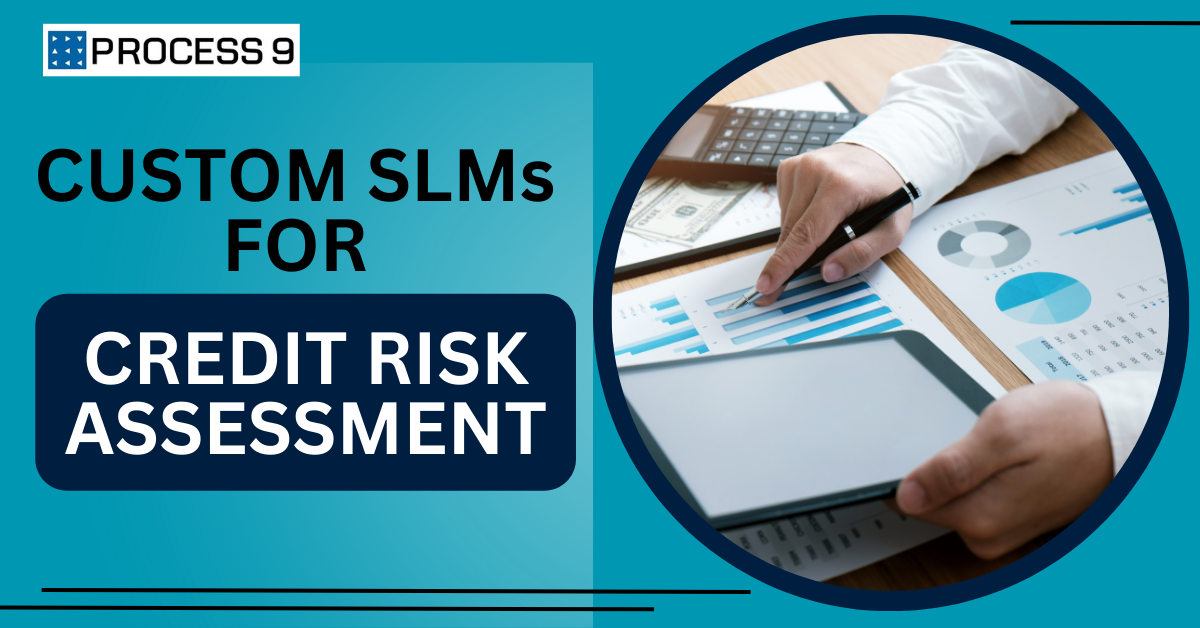In an era where financial inclusion is expanding rapidly across Asia, particularly in India, credit underwriting systems face an unprecedented challenge: evaluating the risk of borrowers with little to no formal credit history. With 190 million adults in India still underbanked or credit-invisible (World Bank, 2023), traditional credit scoring models fall short. Enter custom-built SLMs – the next frontier in credit risk assessment.
The Shortcomings of Traditional Risk Models
Conventional credit scoring relies on structured data like past loan repayment, credit card usage, and formal employment records. But in economies with high levels of informal labour, digital lending, and new-to-credit populations, these signals are often unavailable. As a result, lenders either:
- Reject potentially creditworthy borrowers
- Price risk poorly
- Depend heavily on alternative credit bureaus or third-party tools, raising costs and compromising accuracy
Why SLMs Are Ideal for Credit Risk
Small Language Models, unlike generic large language models, are compact, fine-tuned, and purpose-built. When trained specifically for credit risk assessment, they can:
- Interpret unstructured data like call centre transcripts, application forms, or chat histories
- Analyse alternate data sources like mobile app usage, spending behaviour, utility bill patterns, and SMS metadata
- Adapt to local languages and regional dialects for deeper context
- Run with low compute, enabling edge deployment or in-house hosting – important for data-sensitive BFSI applications
Custom SLMs allow lenders to go beyond black-box scoring and offer transparent, explainable, and granular insights into borrower profiles.
Use Cases: Custom SLMs in Action
- Thin-file borrowers: An SLM can assess language patterns in loan applications or customer interviews to evaluate sincerity, intent, or risk flags like scripted answers or inconsistencies.
- Gig workers & SMEs: These borrowers often lack tax filings or formal balance sheets. But their chat with a relationship manager or UPI transaction patterns can offer hidden insights when parsed by an SLM trained on regional financial behaviour.
- Early delinquency prediction: An SLM trained on collections call data can predict tone, sentiment, and likelihood of default based on borrower response styles, urgency, and engagement levels.
- Fraudulent intent detection: Subtle linguistic cues during KYC video verifications, if flagged by an SLM, can highlight suspicious behaviour, reducing downstream losses.
Regional Relevance: The India Edge
What works in Silicon Valley doesn’t always work in Surat or Madurai. Generic AI models often misunderstand:
- Code-mixed languages: Hindi-English, Tamil-English
- Cultural idioms in spoken or written borrower communication
- Socioeconomic context of loan purpose (e.g., wedding, farming equipment)
Custom SLMs, on the other hand, can be trained on local loan data, multilingual scripts, vernacular voice inputs, and socio-demographic indicators. They offer region-specific accuracy that global LLMs cannot replicate.
Explainability: A Regulatory & Ethical Imperative
With regulators emphasizing explainable AI, BFSI institutions cannot rely on black-box models for credit decisions. Custom SLMs support:
- Transparent model logs showing how a decision was made
- Audit trails for every input considered
- Compliance with fairness frameworks, ensuring no community is unfairly excluded
This not only builds regulatory confidence but also improves borrower trust.
Results That Matter
Institutions adopting custom AI for credit assessment report measurable benefits:
- 20–30% increase in approval rates for thin-file borrowers (FICO Asia, 2023)
- 15% reduction in NPA (Non-Performing Assets) among digitally underwritten loans
- Faster loan processing times, cutting manual review by 40% or more
- Improved customer experience, as borrowers are not penalized for lack of formal records
These models also evolve continuously, learning from new repayment behaviours, product experiments, and regional lending trends.
Building a Custom SLM for Risk Scoring
To create a high-impact credit risk SLM, BFSI firms should:
- Collect diverse and consented training data: Voice, text, KYC documents, transaction summaries, CRM logs.
- Partner with domain-experienced AI teams: Who understand regulatory, ethical, and regional nuances.
- Define risk labels and success metrics: For example, 90-day default vs. 360-day delinquency.
- Ensure human oversight: Particularly in edge cases or large disbursals.
- Deploy on secure infrastructure: On-prem or VPC, with SOC2 or ISO 27001 compliance.
The Business Impact
Ultimately, better credit risk assessment means:
- More loans disbursed safely
- Broader financial inclusion
- Reduced provisioning and write-offs
- Higher customer satisfaction through tailored credit offers
India’s digital lending market alone is projected to grow to $515 billion by 2030 (Bain & Company, 2023). Given the scale of opportunity, the case for investing in intelligent credit infrastructure is strong.
Conclusion
For BFSI institutions in Asia, building custom SLMs isn’t just a tech upgrade. Rather, it’s a strategic leap toward inclusive, agile, and intelligent lending. These models bridge the trust gap between the institution and the unbanked, enabling growth with prudence.
In a world where data is abundant but insight is scarce, custom SLMs offer a way to unlock the next billion in safe, sustainable credit.
Ready to build your own custom SLM for risk assessment? Let’s get started!


